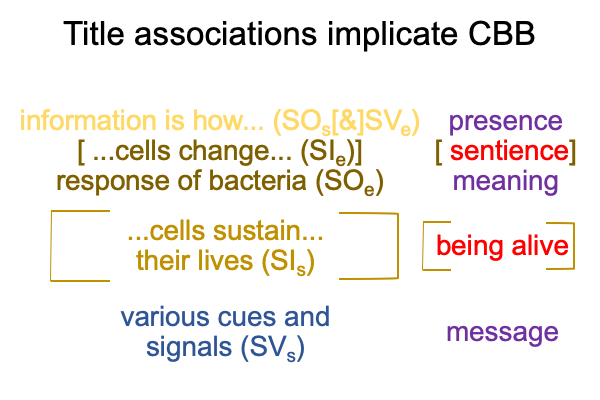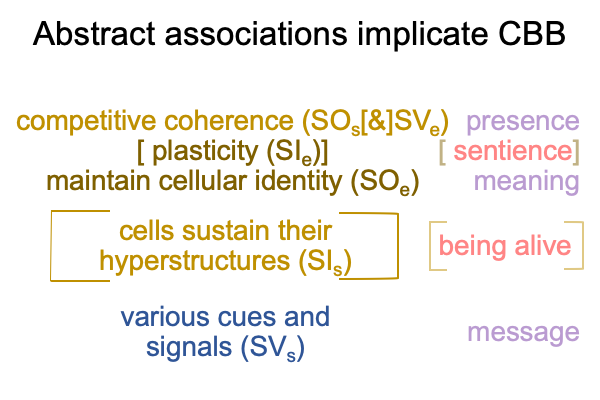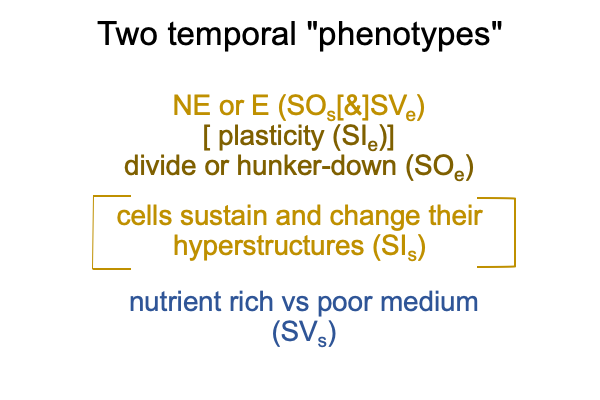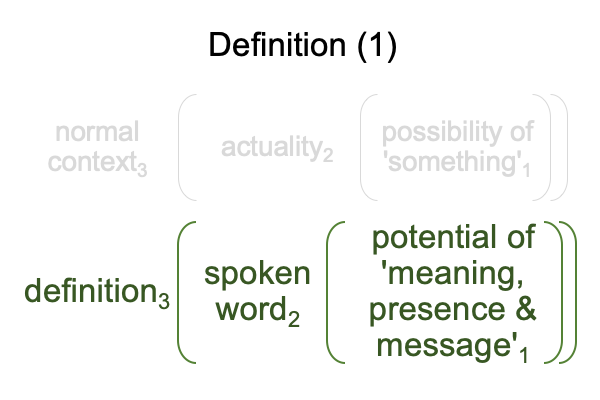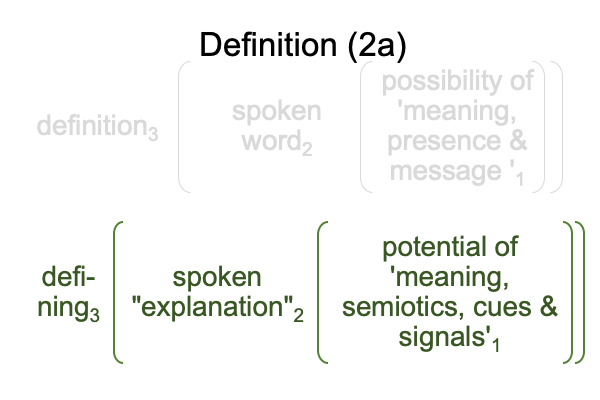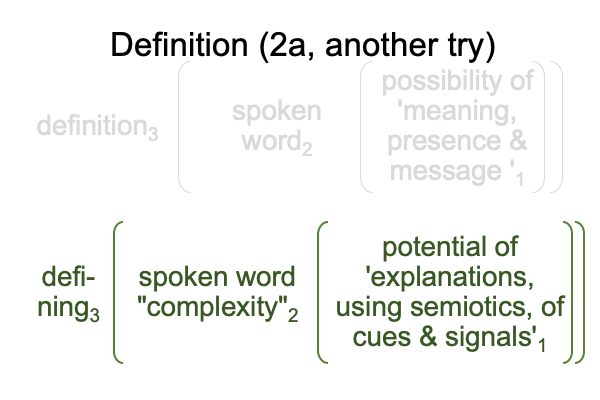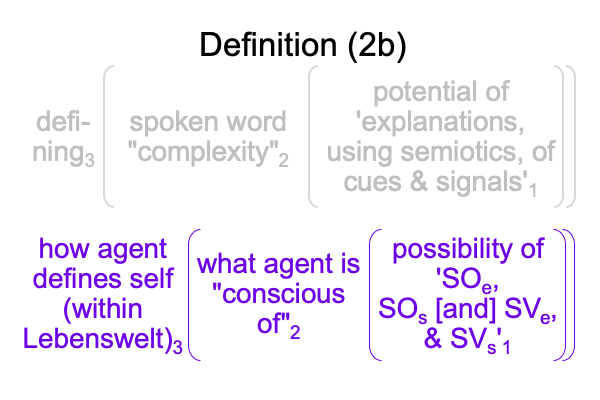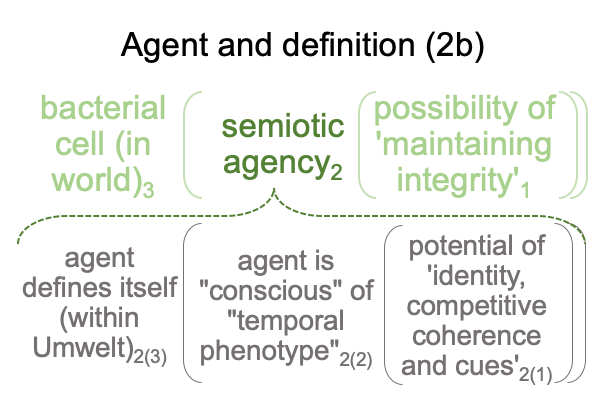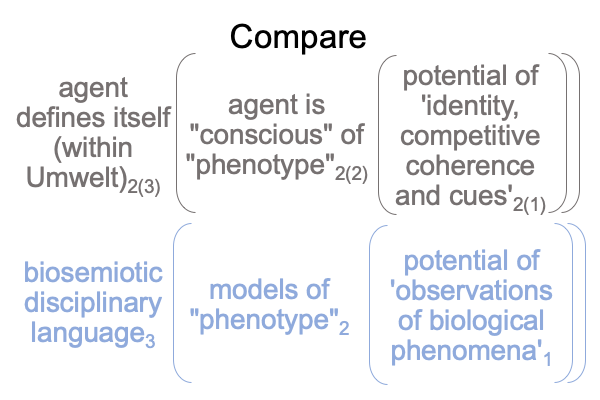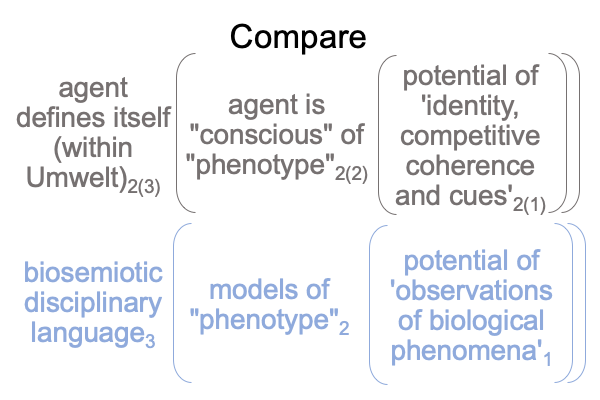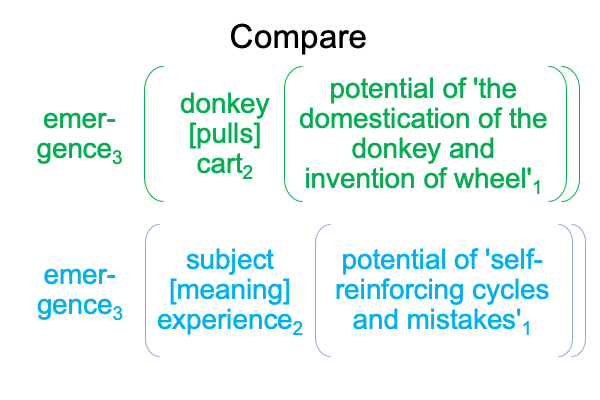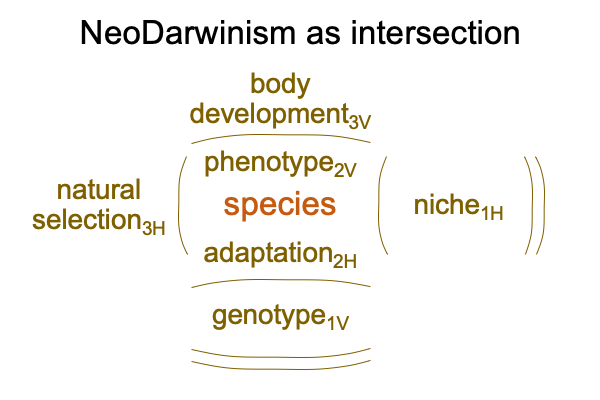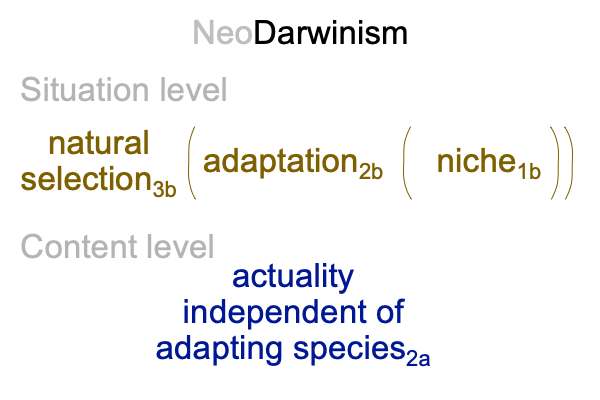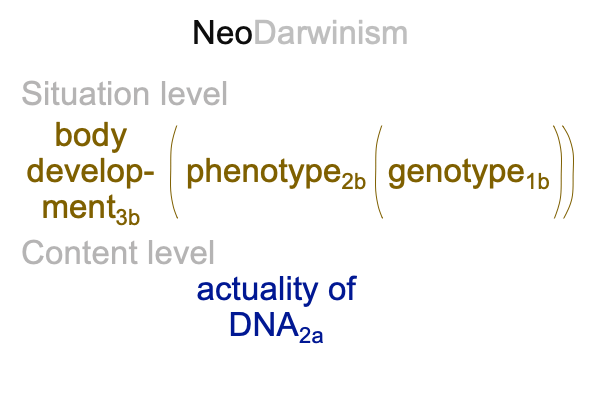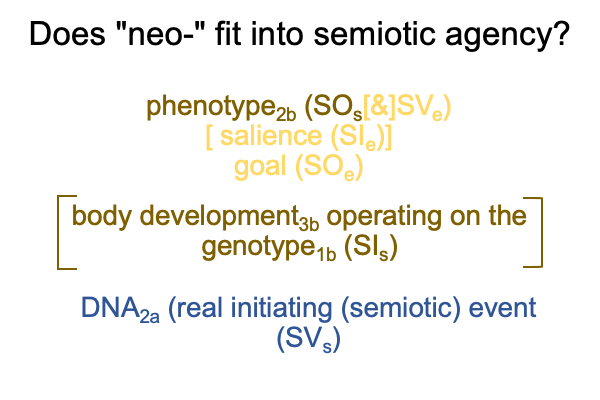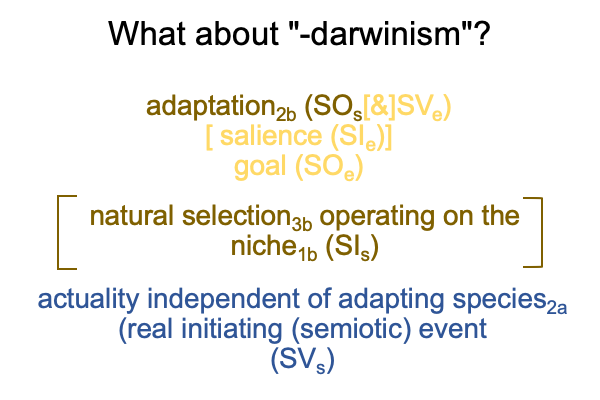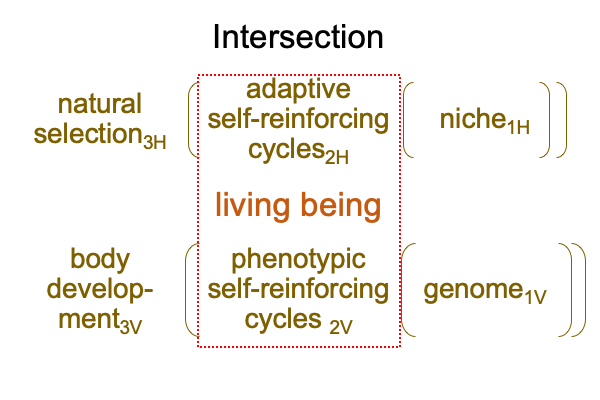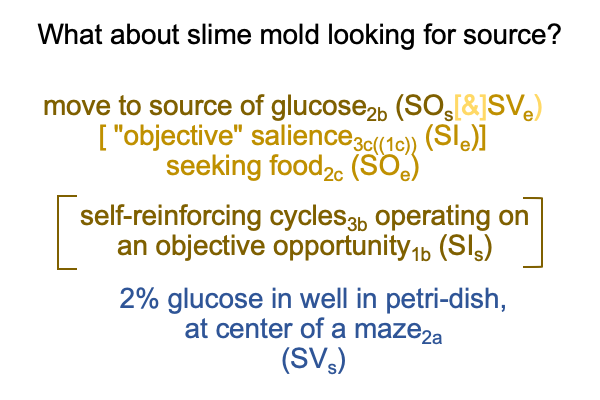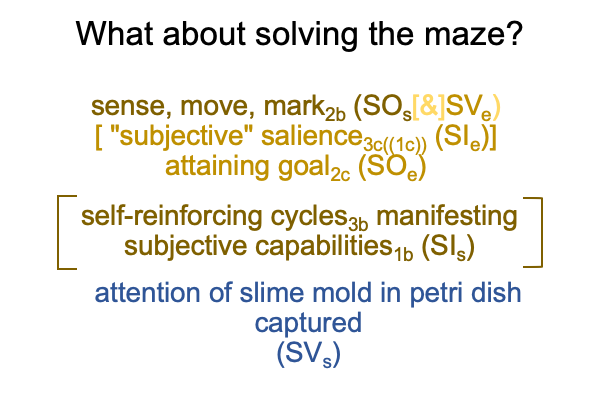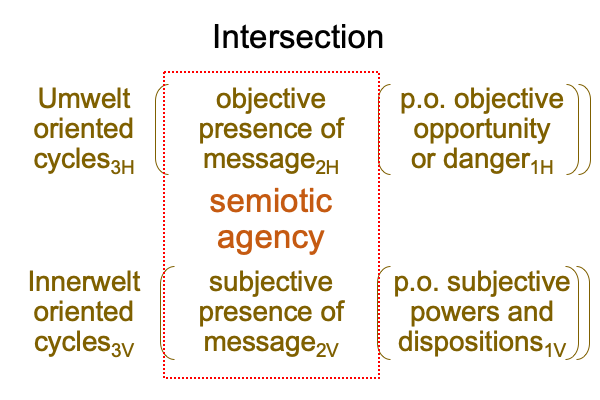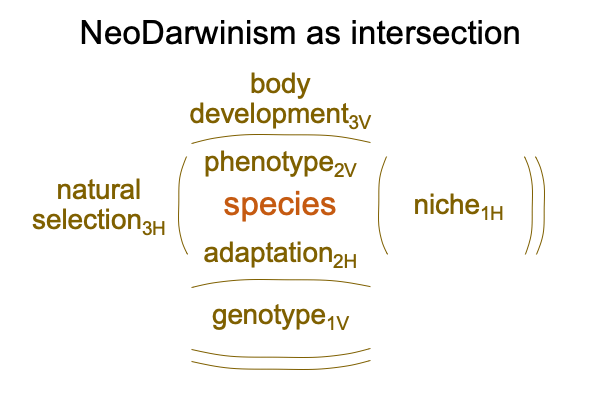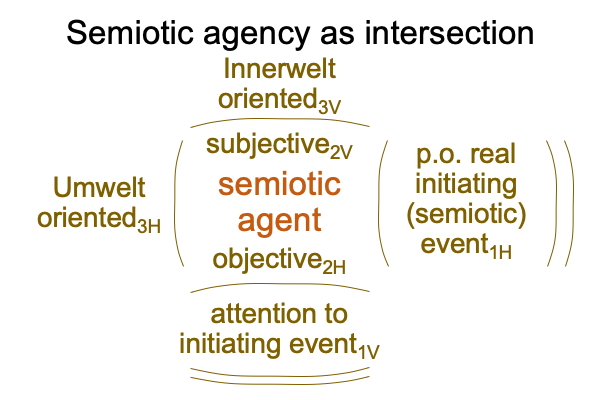Looking at Arthur Reber, Frantisek Baluska and William Miller Jr.’s Chapter (2024) “The Sentient Cell” (Part 4 of 4)
0636 If the agent3 defines2(3) what it is conscious of2(2) within the actuality of semiotic agency2, then what it is conscious of2(2) emerges from and situates the potential of meaning, presence and message2(1) as if it2(1) is a real manifestation of the potential of ‘final causality’1.
Now I can ask, “If the sentient cell3 could speak2(2), how would it label the actualities2 within it3?”
0637 Here are my guesses.
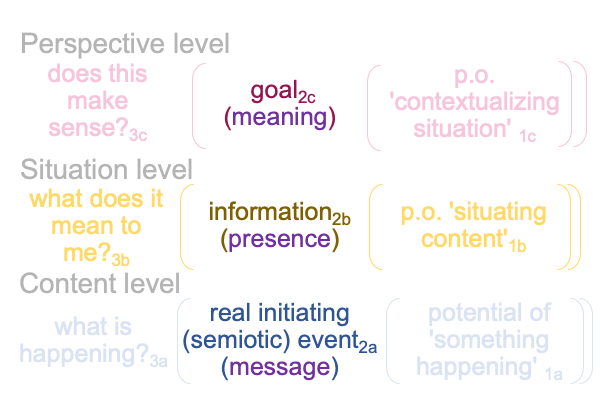
0638 Message goes with firstness and the real initiating (semiotic) event2a (SVs). If there is no message, then why should I pay attention?
Presence goes with secondness and information2b (SOs, contiguous with SVe). There is a certain ambiguity to information. Sure, the real initiating event2a (SVs) stands for information2b (SOs) in regards to being alive3b((1b) (SIs). But, information2b (SVe) also stands for a meaningful goal2c (SOe) in regards to my consciousness, if “consciousness” is the spoken word that applies3c((1c)).
Meaning goes with thirdness and a goal2c (SOe), which entails a judgment. Do I (the agent3) act or not?
0639 Such a dramatic question.
As soon as I3 act, I express my intentions1. It is as if I3 act out my semiotic agency2 for gasp… all to witness, including those disinterested biologists.
Oh my, I feel exposed.
0640 At the end of the chapter (section 13.3), the authors raise the topic of subjective experience.
This topic concludes their discussion, in the same way that a dessert concludes a dinner.
But, I want to pass on that confection.
0641 Instead, let me review where this chapter has taken this examiner.
The authors offer a variation of Sharov and Tonnessen’s noumenal overlay that seems especially applicable to non-human agency. Message, presence and meaning label phenomena. Or, maybe they are conjectures that constitute observations and measurements of biological phenomena.
Is the main reason that biosemioticians can draw upon these labels because the terms already exist in the lexicon of our civilization?
For example, Pavlov’s term, “anticipation”, turns out to be a productive guide for labeling a meaning, presence and message that biologists observe and measure.
Or, is something more significant going on?
0642 Here is a picture of semiotic agency and terminology discussed in this examination.
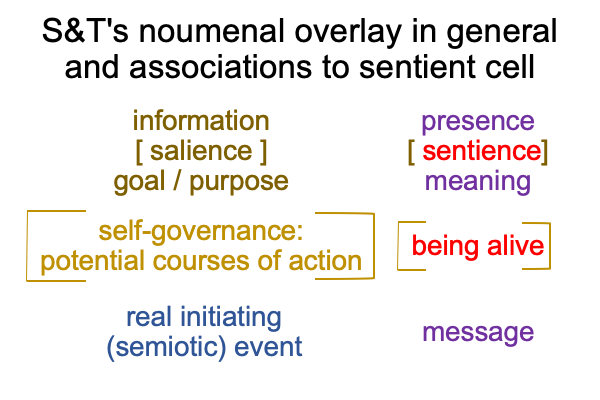
0643 Of course, technical words that apply to meaning, presence and message for the semiosis of a living creatureshould remain relevant. Words that do not may be culled.
This speaks to a concern that is found in these examinations. Biologists love to purloin common terms (such as “anticipation”) in order to construct their technical terminology (where “anticipation” codes for operant conditioning), leading to occasional confusion (as to whether “anticipation” is a conscious action or an unconscious process).
0644 Sharov and Tonnessen’s noumenal overlay characterizes semiotic agency2, as occurring in the normal context of an agent3 and arising from the potential of Aristotle’s final causality’1. This serves as a very attractive corrective to the indiscretions of certain biologists who fall in love with their terminology (including, I am afraid to say, the authors of the present chapter).
0645 Yes, I admit that “the sentient cell” is a fabulous label for models that arise from biological observations of message, meaning and presence in semiotic agency.
But still, one must be careful not to occlude the semiotics within the S&T noumenal overlay.
0646 Here is a picture of the thing itself against the beautiful… outrageously evocative… terminology at play in this chapter.
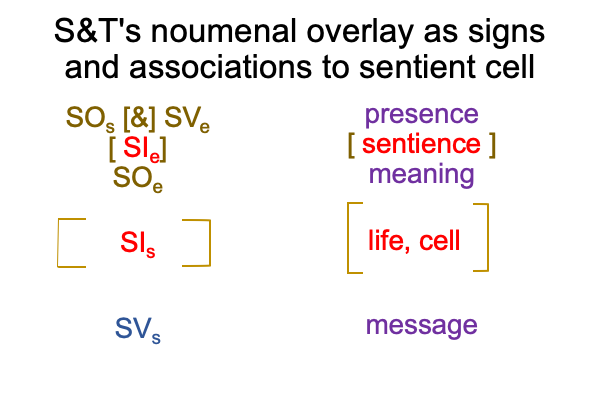
0647 Yes, I, too, suffer the temptation of falling in love with spoken words.
This is one of the difficulties of our current Lebenswelt.
I thank the authors for their clever and rhetorical excursion into a topic that they obviously cherish.

